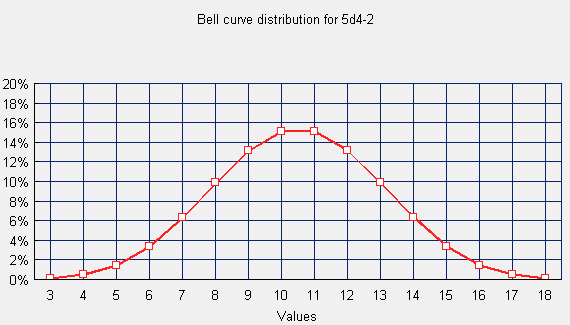Double posting for additional insight:
The Box-Muller transform (Wikipedia it) allows you to generate random normals by using two random floats (you will need to filter out random floats that == 1), but it requires:
# either sin() or cos()
# ln() of a number between 0 and 1
# sqrt() (note that this won't result in a complex number because ln(x) is negative if x < 1)
There is a slight variant method (Marsaglia polar method) that doesn't need sin(), but does require more filtering of random numbers.
If implementing an extension, all of those are available in C standard math libraries. However, I beleive that ln() isn't available to the QC yet (there is DP_QC_LOG, but I don't know if it's natural (base
e) or base 10).
The method I suggest in the last post (essentially, throwing darts at the probability density function) was used to generate
100k normal deviations. I've not tried this, so I don't know what the rejection rate is, but I suspet it's pretty damn high, and will likely end up with a runaway loop error if implemented fully in QC.
There is one other thing that may provide interesting results: Using randomvec() (either by extension or mathlib), and then using just the x component. It won't go beyond -1 or +1 (so not a true normal deviate), but it will fall in a roughly bellcurve shape. It does however have the advantage of being very well supported...

 for -4<=x<=4. You'll need to define e as a constant (as is done for pi), and then use pow() and sqrt() (either from mathlib or from DP_QC_SINCOSSQRTPOW). Then something like:
for -4<=x<=4. You'll need to define e as a constant (as is done for pi), and then use pow() and sqrt() (either from mathlib or from DP_QC_SINCOSSQRTPOW). Then something like: